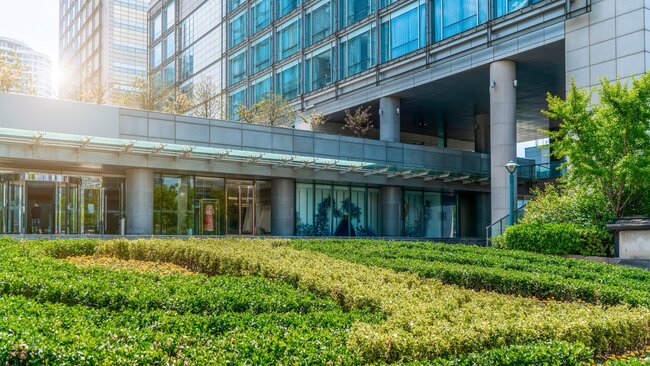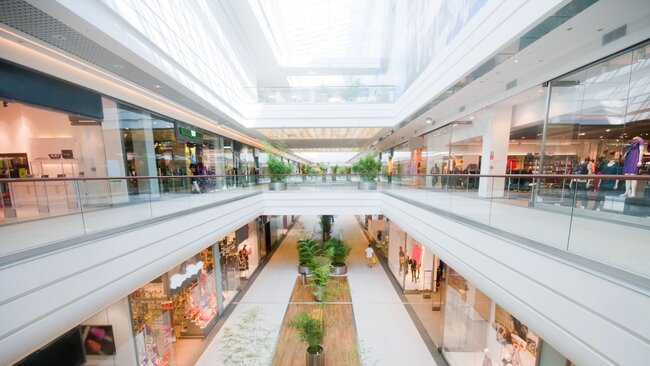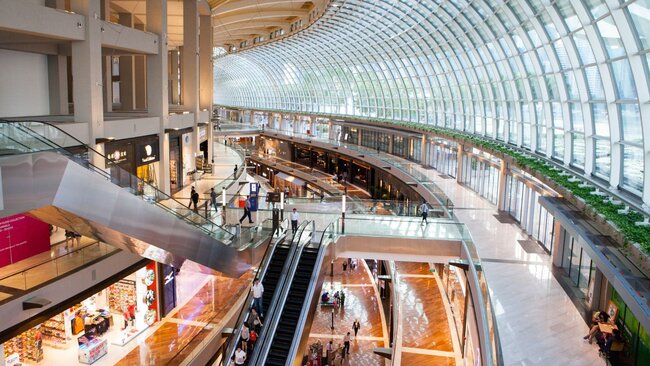From towering skyscrapers to innovative retail spaces, the realm of commercial architecture continuously evolves. This awe-inspiring world is driven by technological advancements, societal shifts, and the quest for sustainability.
Whether you’re a seasoned architect, an aspiring designer, or simply an enthusiast of the built environment, this blog will uncover the latest trends, examine groundbreaking designs, and seek inspiration from the ever-changing landscape of commercial architecture. Let’s dive in.
What is Commercial Architecture?

Commercial architecture encompasses the design and construction of buildings and structures that are primarily intended for commercial purposes. These structures are diverse and can include office buildings, retail spaces, hotels, restaurants, shopping malls, and entertainment venues, among others. The primary goal of commercial architecture is to create functional, efficient, and aesthetically pleasing spaces that cater to the needs of businesses and the public. Commercial architects must consider factors such as traffic flow, branding, accessibility, sustainability, and zoning regulations when designing these spaces. At its core, commercial architecture plays a vital role in shaping the urban landscape and influencing the way people interact with and experience the built environment in everyday life.
Emerging Trends in Commercial Architecture
In the ever-evolving world of architecture, commercial spaces are not just buildings; they are dynamic environments that reflect societal values, technological advancements, and the evolving needs of businesses and communities. As we look to the future, several emerging trends are reshaping the landscape of commercial architecture, influencing everything from design aesthetics to functionality. Let’s delve into these trends and discover how they are shaping the commercial architecture of tomorrow.
1. Sustainability & Energy-Efficient Designs

Sustainability has become a cornerstone of modern architecture, and commercial buildings are no exception. With a growing awareness of environmental issues and a push for greener practices, architects are incorporating sustainable design principles into commercial projects. From passive design strategies to the integration of renewable energy sources like solar panels and wind turbines, sustainability is no longer an afterthought but a central consideration in commercial architecture. Energy-efficient features such as green roofs, high-performance insulation, and efficient HVAC systems not only reduce environmental impact but also result in long-term cost savings for businesses.
2. Accessibility

Accessibility is a fundamental aspect of inclusive design, ensuring that commercial spaces are welcoming and usable by people of all abilities. In recent years, there has been a greater emphasis on creating barrier-free environments that accommodate individuals with disabilities. This includes features such as wheelchair ramps, elevators, wider doorways, tactile signage, and accessible restroom facilities. Beyond physical accessibility, architects are also incorporating universal design principles to enhance the overall usability and comfort of commercial spaces for everyone, regardless of age or ability.
3. Technology

The integration of technology is revolutionizing the way commercial buildings are designed, constructed, and operated. From advanced Building Information Modeling (BIM) software to smart building systems and Internet of Things (IoT) devices, technology is enhancing efficiency, sustainability, and occupant comfort in commercial spaces. Automated lighting and HVAC systems, sensor-based controls, and real-time data analytics are enabling buildings to adapt to changing environmental conditions and user preferences, optimizing energy usage and overall performance.
4. Mixed-Use Buildings

Mixed-use developments are gaining popularity as urban populations grow and demand for multifunctional spaces increases. Combining residential, commercial, and sometimes even cultural or recreational functions within a single development, mixed-use buildings foster vibrant, walkable communities and maximize land use efficiency. From live-work spaces to integrated retail and dining experiences, these versatile developments blur the lines between work, leisure, and living, creating dynamic urban environments that cater to diverse lifestyles.
5. Lush Outdoor Spaces

In an era where urban greenery is increasingly valued for its aesthetic, environmental, and health benefits, commercial architects are incorporating lush outdoor spaces into their designs. From rooftop gardens and green walls to landscaped courtyards and public plazas, these outdoor amenities provide opportunities for relaxation, socialization, and connection with nature in the midst of urban environments. Beyond their aesthetic appeal, green spaces also contribute to improved air quality, biodiversity, and overall well-being for building occupants and surrounding communities.
6. Lighting and Acoustics

Lighting and acoustics play a crucial role in shaping the ambiance and functionality of commercial spaces. Architects are paying greater attention to lighting design, incorporating natural light wherever possible to enhance comfort, productivity, and energy efficiency. Additionally, advancements in lighting technology, such as LED fixtures and dynamic lighting controls, allow for greater flexibility and creativity in illuminating commercial interiors. Similarly, acoustics are being carefully considered to minimize noise pollution and create comfortable, productive environments for occupants, whether they’re working, dining, or socializing.
Get Designing with Cedreo!
As we look ahead to the future of commercial architecture, these emerging trends promise to shape the way we design, experience, and interact with the built environment. From sustainable practices to innovative technologies and inclusive design principles, the evolution of commercial architecture reflects our collective aspirations for a more sustainable, accessible, and vibrant urban future.
With leading-edge BIM and AI technologies through Cedreo, you can design with the power of optimized plans and 3D models to guide your project execution. Instantly generate construction-ready designs by signing up for FREE. Bring your vision to life on time and budget with Cedreo.



